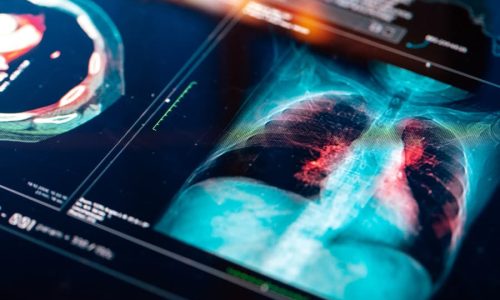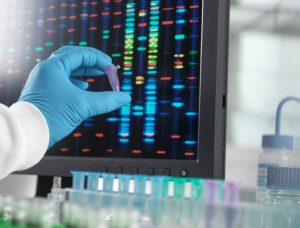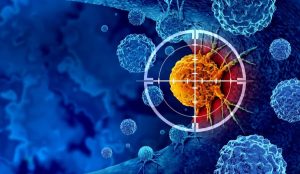
Recognizing Cancer Misinformation: Expert Insights from 2 RCCA Oncologists
“Consider the source.” It’s good advice for dealing with the sting of criticism or the allure of gossip, but two oncologists say it’s even better
HIPAA Alert: Potential Data Breach Learn More
Questions on Oncology, Hematology and/or Infusion Clinical Services due to COVID-19 Crisis – CALL 833-698-1623
Important Information for Our Patients Regarding the Coronavirus.
RCCA Providing Area Cancer Patients with Access to Care During Coronavirus Outbreak
RCCA Offering Patients Virtual Visits During Coronavirus Pandemic
If an individual is experiencing symptoms of lung cancer or an infection, the next step is a lung biopsy. This step can sound worrisome at first. How is a lung biopsy done? Does it hurt? If a physician orders one, does it mean you have cancer? By learning more, individuals can help themselves feel at peace about their procedure and what it might mean.
Many individuals diagnosed with lung cancer turn to Regional Cancer Care Associates (RCCA) for treatment. RCCA is a group of more than 100 medical oncologists and hematologists who treat patients who have solid tumors, blood-based cancers and benign blood disorders at 25 locations throughout New Jersey, Connecticut, Massachusetts, and the Washington, D.C., area. They strive to educate patients while providing innovative care.
Here, we discuss lung biopsies, why they are needed, and how they are done, to help people prepare.

A lung biopsy is a procedure to remove small amounts of tissue or fluid from the lungs. The material, called a sample, may be taken using a closed method that is performed through the skin or the trachea (windpipe). Samples may also be taken using an open method, or surgery. The samples are then examined under a microscope to search for abnormalities.
Lung biopsy is the only way to confirm suspected cancer, and nearly all cases are diagnosed with a biopsy. Tissue samples can provide other information, too. Not only do they show whether cancer is present; they can also be examined for biomarkers, or specific DNA changes found in certain lung cancers. These biomarkers tell oncologists whether certain treatments, including targeted therapies, are likely to be effective.
There are several reasons why physicians might request a lung biopsy. Not all of them are related to cancer. Biopsy may be used to diagnose benign conditions as well, including infections and non-cancerous tumors. Some reasons for a lung biopsy include:
There may be other reasons as well. If someone is not certain why a lung biopsy has been ordered, they should not hesitate to ask. Physicians are obligated to inform individuals of the reason for any medical testing.
Before a lung biopsy, the physician will explain the procedure and offer the opportunity to ask any questions or express concerns. They will also provide instructions for preparation. While biopsy is safe, following instructions is crucial to prevent complications.
Individuals can usually continue taking medication as normal, though they should speak with the physician if they use any anticoagulant (blood-thinning) medications. They should also inform the physician of any medical allergies or sensitivities. These might need to be paused before the procedure. In addition, people must fast (avoid food and drink) for up to eight hours before the biopsy.
There are several types of lung biopsy, each with a different approach. Which one the physician uses depends on a variety of factors, including the individual’s overall health condition and where in the lung the suspicious tissue is located. The process depends on which is being used:
A needle biopsy involves inserting a hollow needle through a tiny incision in the chest. An X-ray or CT scan is used to guide the needle toward the biopsy site. The needle is used to take one or more samples from the lung and then withdrawn before the incision is closed.
The procedure does not require general anesthesia, but a sedative may be used to help the person stay calm. It takes between 30 and 45 minutes to complete. While the person may experience a pinch or burning sensation when the local anesthetic is injected, the procedure is otherwise painless. Some individuals need a short stay at the hospital, while others can go home after a few hours of rest.
A transbronchial biopsy uses an advanced piece of equipment called a bronchoscope. This is a type of tiny camera. The bronchoscope is advanced down the throat and into the airways, where it is used to examine tissue and take samples. A nasal tube is used to help with breathing, and numbing medication is sprayed into the throat to prevent gagging.
Like a needle biopsy, transbronchial procedures do not require general anesthesia. The individual may feel some discomfort as the bronchoscope is inserted. The procedure is not painful, however, and their airways will not be fully blocked. Most people can return home on the same day as their procedure. They can go back to work the next day.
A thoracoscopic biopsy is a minimally invasive surgery. The physician makes a tiny incision on the person’s back. The incision is used to insert a thoracoscope, which is a type of tiny camera. The thoracoscope provides a video feed to guide the physician’s tools while taking samples. Afterward, a chest tube may be placed to remove air or fluid left by the operation.
The procedure takes between 30 and 90 minutes. It may or may not require general anesthesia. Afterward, the individual can usually go home the same day if they did not receive general anesthesia. Those who did receive anesthesia may need to spend a few nights at the hospital.
Open biopsy is an inpatient surgical procedure that is performed under general anesthesia. During the procedure, an incision is made along the chest and extending under the armpit. The ribs are then gently separated using a special instrument. The surgeon examines the lungs directly and removes suspicious tissue as necessary for the biopsy.
Individuals can expect a several-day hospital stay after an open biopsy. During this period, they will be monitored to prevent complications with recovery. A chest tube will be placed to drain fluid. An epidural catheter may also be used. This is a small device that is implanted underneath the skin to infuse pain medication, reducing discomfort during recovery.
After a lung biopsy, tissue samples are sent to the laboratory for examination. It may be a few days before the results are returned. Once results are ready, the physician will schedule a follow-up appointment to discuss the pathology report.
The pathology report will be either negative, meaning that no cancer was found, or positive, meaning that the biopsy identified cancer. If cancer is present, the report will include which type. The report may also cover other changes in the lungs, including scarring, inflammation, or pre-cancerous conditions. This information will help oncologists plan the most appropriate treatment.
Lung cancer testing can be overwhelming. By learning more about the process, however, patients can approach it with greater confidence. Regional Cancer Care Associates educates patients to help them avoid life-threatening cancer. RCCA specialists provide care to more than 30,000 new patients and 265,000 established patients each year. RCCA physicians offer patients innovative therapies, including immunotherapies and targeted therapy, cutting-edge diagnostics as well as access to approximately 300 clinical trials in community-based centers close to home.
For more information or to schedule an appointment,
call 844-346-7222. You can also schedule an appointment by calling the RCCA location nearest you.

“Consider the source.” It’s good advice for dealing with the sting of criticism or the allure of gossip, but two oncologists say it’s even better

Biomarker testing is the evaluation of samples of a patient’s tumor, blood, or both to identify the genetic mutations responsible for the development of cancer,

Medical research has made tremendous strides in improving how oncologists understand and treat cancer. One of the most exciting developments is the use of radiopharmaceuticals.

Regional Cancer Care Associates is one of fewer than 200 medical practices in the country selected to participate in the Oncology Care Model (OCM); a recent Medicare initiative aimed at improving care coordination and access to and quality of care for Medicare beneficiaries undergoing chemotherapy treatment.